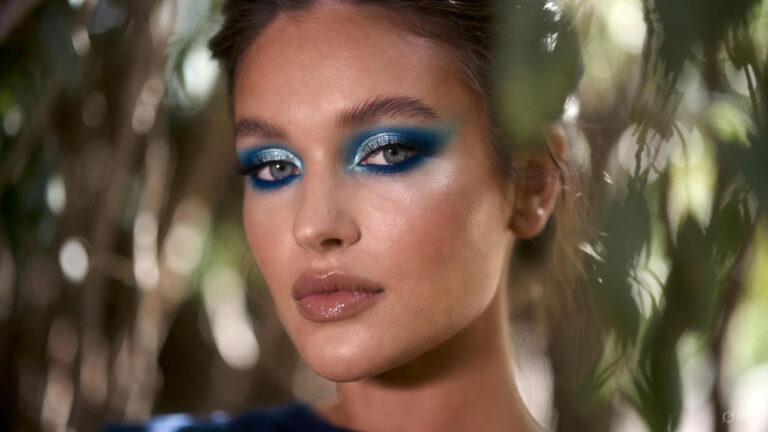In the world of beauty and self-expression, makeup serves as a powerful medium for creativity and artistic exploration. Just as painters use brushes and canvases to create abstract masterpieces, makeup artists wield brushes and palettes to transform faces into living works of art.
The avant-garde makeup movement, characterized by its daring and experimental approach to beauty, draws inspiration from various sources, including fashion, culture, and art. Among the most influential of these artistic influences is abstract art, with its bold colors, dynamic shapes, and expressive forms serving as a wellspring of inspiration for avant-garde makeup artists.
In this article, we delve into the captivating interplay between abstract art and avant-garde makeup, exploring how artists translate the principles and aesthetics of abstract art onto the canvas of the human face.
Abstract Art: A Source of Inspiration
Abstract art, with its emphasis on form, color, and emotion over representational accuracy, has long captivated artists and audiences alike. Emerging in the early 20th century as a radical departure from traditional artistic conventions, abstract art encompasses a diverse range of movements, including Cubism, Surrealism, and Abstract Expressionism.
Artists like Pablo Picasso, Wassily Kandinsky, and Jackson Pollock pushed the boundaries of artistic expression, exploring new ways of seeing and interpreting the world around them.
The bold colors, dynamic shapes, and expressive forms of abstract art serve as a boundless source of inspiration for avant-garde makeup artists seeking to push the boundaries of beauty and self-expression.
From the fractured planes of Cubism to the swirling forms of Surrealism, abstract art offers a wealth of visual motifs and aesthetic principles that can be translated onto the canvas of the human face.
Avant-Garde Makeup: Pushing the Boundaries of Beauty
Avant-garde makeup, often characterized by its unconventional techniques, daring color choices, and experimental designs, challenges traditional notions of beauty and conformity.
Drawing inspiration from a diverse array of sources, including fashion, culture, and art, avant-garde makeup artists seek to create bold and innovative looks that push the boundaries of self-expression.
For avant-garde makeup artists, the face becomes a blank canvas upon which to explore the limitless possibilities of color, texture, and form.
Just as abstract artists deconstruct and reassemble visual elements to create new forms of expression, avant-garde makeup artists deconstruct and reconfigure facial features to create striking and unconventional looks that defy convention.
The Intersection of Abstract Art and Avant-Garde Makeup
At the intersection of abstract art and avant-garde makeup lies a rich tapestry of creativity and self-expression. Makeup artists draw inspiration from abstract art movements such as Cubism, Surrealism, and Abstract Expressionism, translating their principles and aesthetics onto the canvas of the human face.
In Cubist-inspired makeup looks, for example, artists may use geometric shapes and bold lines to deconstruct and reconfigure facial features, creating a sense of dynamism and movement.
Surrealist-inspired makeup looks, on the other hand, may incorporate dreamlike imagery and unexpected juxtapositions to challenge conventional notions of beauty and reality.
In Abstract Expressionist-inspired makeup looks, artists may use bold colors and gestural brushstrokes to evoke a sense of emotion and energy.
Conclusion
The influence of abstract art on avant-garde makeup is undeniable, with artists drawing inspiration from the bold colors, dynamic shapes, and expressive forms of abstract art movements to create bold and innovative looks that push the boundaries of beauty and self-expression. From Cubist-inspired geometric shapes to Surrealist-inspired dreamlike imagery, abstract art serves as a boundless source of inspiration for avant-garde makeup artists seeking to challenge conventional notions of beauty and reality.
FAQs
Q1: How can I incorporate abstract art into my makeup routine?
You can incorporate abstract art into your makeup routine by experimenting with bold colors, dynamic shapes, and expressive forms. Try deconstructing and reconfiguring facial features using geometric shapes and bold lines inspired by Cubism, or create dreamlike imagery and unexpected juxtapositions inspired by Surrealism.
Q2: Are there any specific products or techniques used in avant-garde makeup?
Avant-garde makeup often involves unconventional techniques and products, such as using unconventional materials like feathers, sequins, or paper, as well as specialized tools like fine-tipped brushes and precision applicators.
Q3: Can anyone wear avant-garde makeup?
Avant-garde makeup is all about self-expression and creativity, so anyone can wear it regardless of age, gender, or skill level. It’s about experimenting with different looks and pushing the boundaries of conventional beauty.
Q4: How do I remove avant-garde makeup?
Removing avant-garde makeup can be done using makeup remover wipes, micellar water, or oil-based cleansers. It’s essential to be gentle when removing makeup, especially if you’ve used unconventional materials or techniques.
Q5: Are there any avant-garde makeup artists I can follow for inspiration?
Yes, there are many avant-garde makeup artists you can follow on social media platforms like Instagram and YouTube for inspiration, including Alex Box, Pat McGrath, and Isamaya Ffrench.



